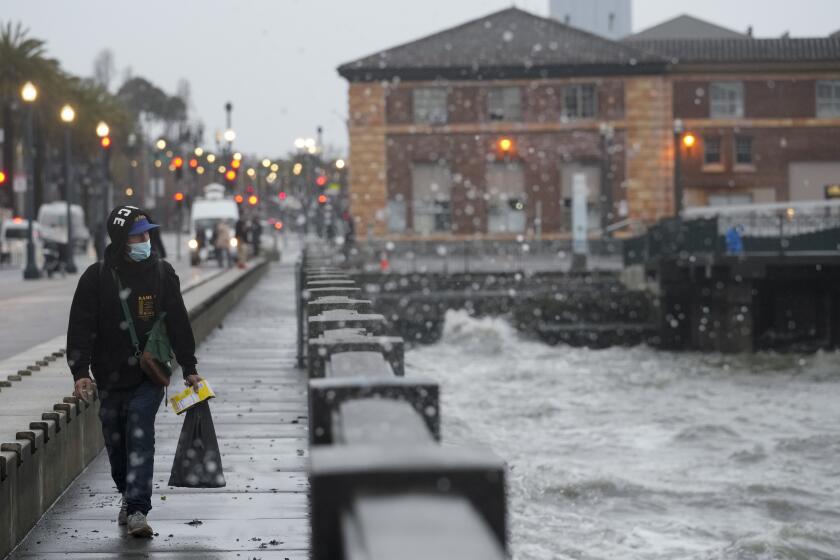Britain, France, Spain had their hottest years ever in 2022 as Europe’s climate changes

- Share via
LONDON — Britain had its hottest year on record in 2022, official figures show, the latest evidence that climate change is transforming Europe’s weather.
The U.K.’s Met Office weather agency said Thursday that the provisional annual average temperature in the country was 50 degrees, the highest since comparable data began to be compiled in 1884. The previous record was 49.8 degrees, set in 2014.
Met Office scientists said human activity — primarily fossil fuel emissions — has made such warm conditions vastly more likely. Britain’s 10 hottest years on record have all been since 2003.
“The results showed that recording [50 degrees] in a natural climate would occur around once every 500 years, whereas in our current climate it could be as frequently as once every three to four years,” said Met Office scientist Nikos Christidis.
Britain is not alone. France’s average temperature was above 57.2 degrees last year, making it the hottest year since weather readings began in the country in 1900. Switzerland’s meteorological service said the alpine nation’s annual average temperature of 45.3 degrees was “by far the highest value since measurements began in 1864.”
Spain also had its hottest year since records started in 1961, according to the national weather agency Aemet, with an average daily temperature of 59.7 degrees. It said the four hottest years on record for the southern European country have all come since 2015.
A powerful winter storm that blasted Northern California with strong winds and heavy rain continued its march through the region Thursday.
Last year saw summer drought and heat waves across much of Europe, with the temperature in Britain rising above 104 degrees for the first time on record. Norway’s Svalbard islands in the Arctic had their warmest summer in more than a century of record-keeping. The archipelago’s average temperature for June, July and August was 45.3 degrees, the Norwegian Meteorological Institute said.
Autumn brought more heavy rain in parts of Europe, including the mountainous Italian island of Ischia, where downpours in November triggered a massive landslide that pushed cars and buildings into the sea and killed at least a dozen people.
Unlike the U.S. and Canada, which have been hit by bitter cold and snowstorms, much of Europe is experiencing unseasonably warm winter weather.
In Germany, the year ended with the warmest New Year’s Eve on record, with temperatures reaching 68 degrees in the south of the country. Belarus, Belgium, the Czech Republic, Latvia, Poland and the Netherlands all set national record daily highs for Dec. 31 or Jan. 1.
As 2023 begins, many low and medium-altitude ski resorts in the Alps, the Pyrenees and other European ranges are experiencing a lack of snow.
In Bosnia, spring-like weather has foiled even artificial snow — either it’s too warm to make it, or it melts soon after being spat out onto the slopes. Along the slopes in Bjelasnica near Sarajevo on Wednesday, snow accumulation amounted to little more than several white patches on an otherwise grassy landscape of brown and green.
More to Read
Sign up for Essential California
The most important California stories and recommendations in your inbox every morning.
You may occasionally receive promotional content from the Los Angeles Times.











